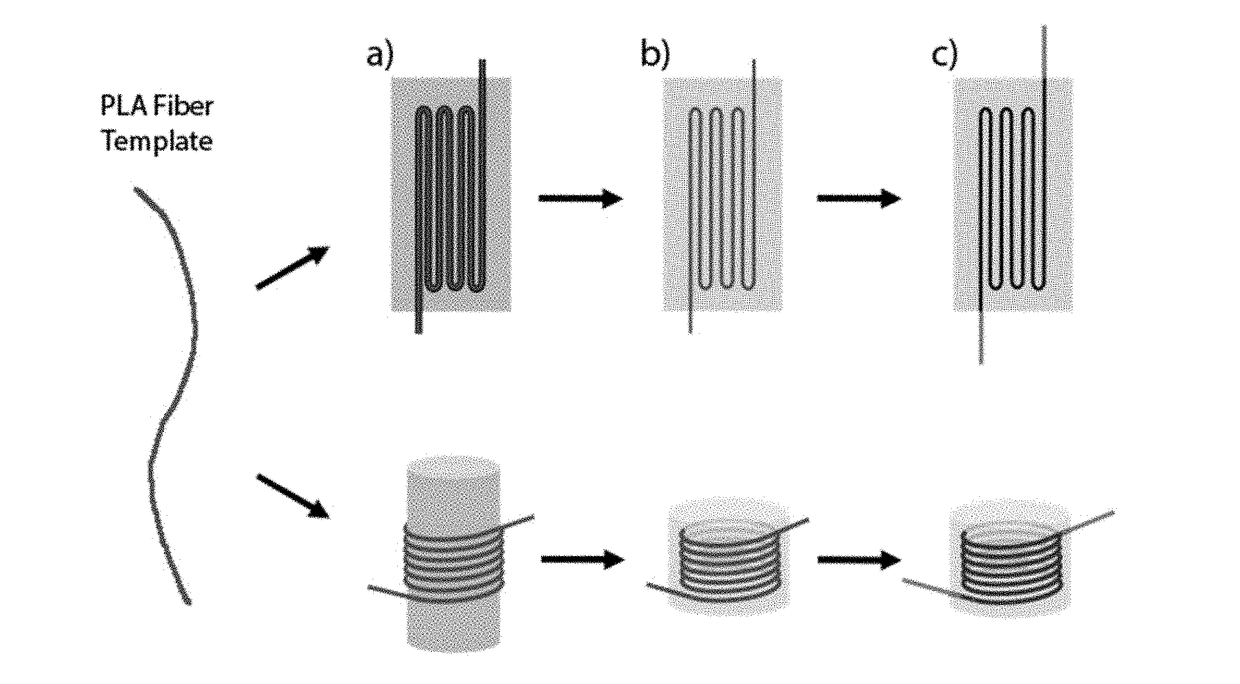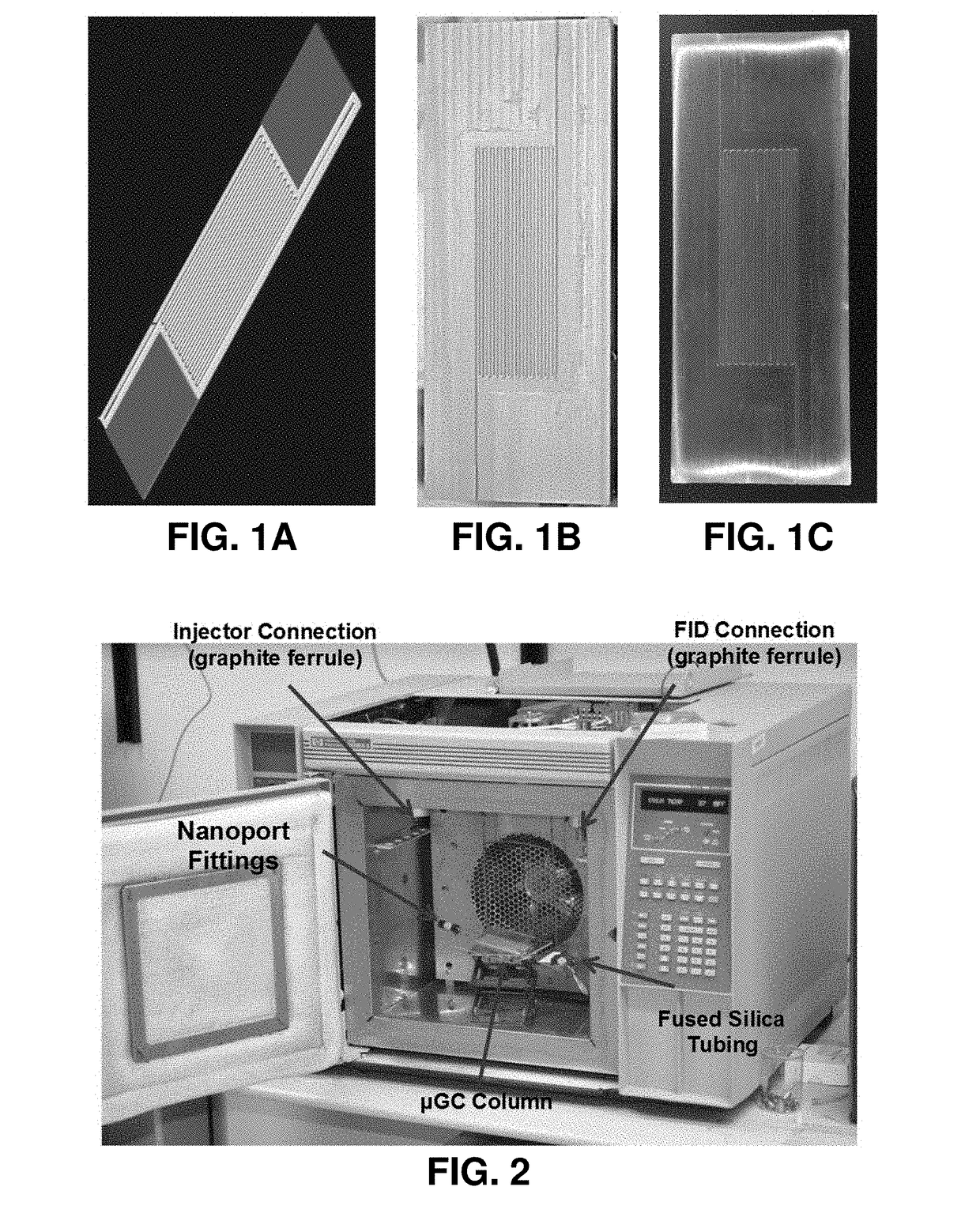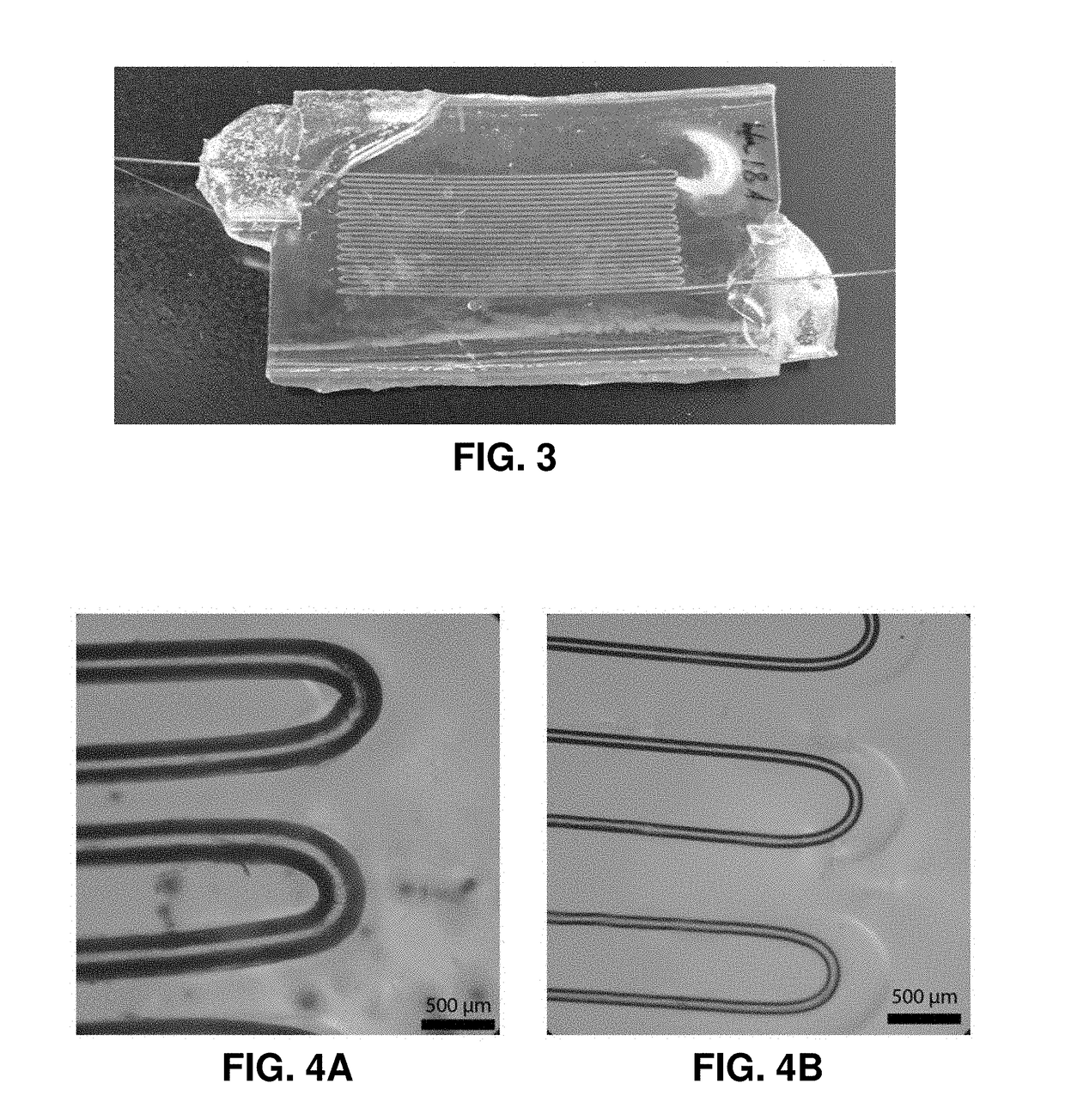Polymer microcolumn for gas or vapor separation, chromatography, and analysis
- Summary
- Abstract
- Description
- Claims
- Application Information
AI Technical Summary
Benefits of technology
Problems solved by technology
Method used
Image
Examples
example 1
as Chromatography Microcolumns Produced with a Sacrificial Template
[0223]Introduction: Gas chromatography (GC) is a powerful tool for analyzing volatile samples, but traditional GC instruments are confined to laboratory use, due in large part to their bulk. The need to analyze volatile samples outside the laboratory and in real time has spurred the development of portable GC devices. Portable GC devices have already found commercial use in industrial and environmental applications, and there are ongoing efforts to further miniaturize the various components of GC instruments, including the GC column.
[0224]The first GC microcolumn was developed by Terry and Angell, who used photolithography to etch a channel into a silicon wafer.1 Since the invention of the silicon GC microcolumn, other researchers have continued to improve upon microcolumn designs and incorporate silicon GC microcolumns into portable GC instruments.2-5 The silicon chip-based GC microcolumns differ from traditional si...
example 2
tal Descriptions
[0269]Optional supplemental descriptions and examples, for example relating to preparation of materials or testing procedures, may be found in Suslick, et al. (U.S. Patent Publication No. 2015 / 0300998) and in Rankin, et al. (J. M. Rankin, K. S. Suslick, “The development of a disposable gas chromatography microcolumn”, in Chemical Communications, year 2015, volume 51 (43), pages 8920-8923), each of which is incorporated herein in its entirety. Some exemplary supplemental descriptions are provided below.
[0270]A reusable mold may made by micromachining polychlorotrifluoroethylene (PCTFE) with the negative relief of a serpentine channel design. An organosilane may be doped into a nonpermeable flexible epoxy, optionally yielding phase segregation of siloxane-rich phase. A mixture of n-alkanes (e.g., C5-C10) may be injected onto the column. Some exemplary useful materials may include two-part flexible epoxies (3M DP-190, DP-125, and DP-105) and polydimethylsiloxane two-par...
PUM
| Property | Measurement | Unit |
|---|---|---|
| Temperature | aaaaa | aaaaa |
| Diameter | aaaaa | aaaaa |
| Diameter | aaaaa | aaaaa |
Abstract
Description
Claims
Application Information
 Login to View More
Login to View More - R&D
- Intellectual Property
- Life Sciences
- Materials
- Tech Scout
- Unparalleled Data Quality
- Higher Quality Content
- 60% Fewer Hallucinations
Browse by: Latest US Patents, China's latest patents, Technical Efficacy Thesaurus, Application Domain, Technology Topic, Popular Technical Reports.
© 2025 PatSnap. All rights reserved.Legal|Privacy policy|Modern Slavery Act Transparency Statement|Sitemap|About US| Contact US: help@patsnap.com



